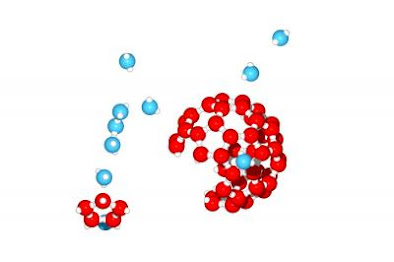VIRUS - STRUCTURE AND FUNCTION
An entire virus structure is known as a virion. A virion is divided into two basic parts, a nucleic acid (RNA or DNA) which is the inner genome and an outer protective protein covering. The protein coat is also known as capsid. It functions as a shell to protect the inner genome (RNA or DNA) from different nucleases.
The genome's main function is to be injected into the host's cells and so that the cell can express it. Its similar to the crow and cuckoo story. The virus injects it's genome into the cell, so that the cell reproduces more of the genome, thus helping it to infect the host.
During infection, the outer shell or capsid attaches itself to unique receptors in the host’s body i.e the cells. The capsids are entirely designed and coded by the virus genome. They are formed with protein coats that contain only few protein specimens. Therefore multiple protein structures must assemble to form the three-dimensional structure of the capsid.
 |
| Formation of Viral Capsid. |
Some viruses have an extra layer of covering known as an envelope. This envelope covering is usually derived from the infected host’s cell membrane. In most cases, the virions with envelopes are newly born ones in an infected body. They are wrapped in a piece of the plasma or cell membrane from the cell. It acts as an additional shield to help a virus survive and infect other cells.
The Virus envelope is made of a lipid double layer (lipids are molecules that have hydrocarbons and are the functional unit of a cell) that closely surrounds the shell. The exterior part of the bilayer or double layer is covered with a type of protein structures know as glycosylated protein membranes.. These glycoprotein structures are shaped as spines on the surface, giving the virus a spiky look.
 |
| Spiky structure of a virus due to the glycosylated membranes. |
Comments
Post a Comment